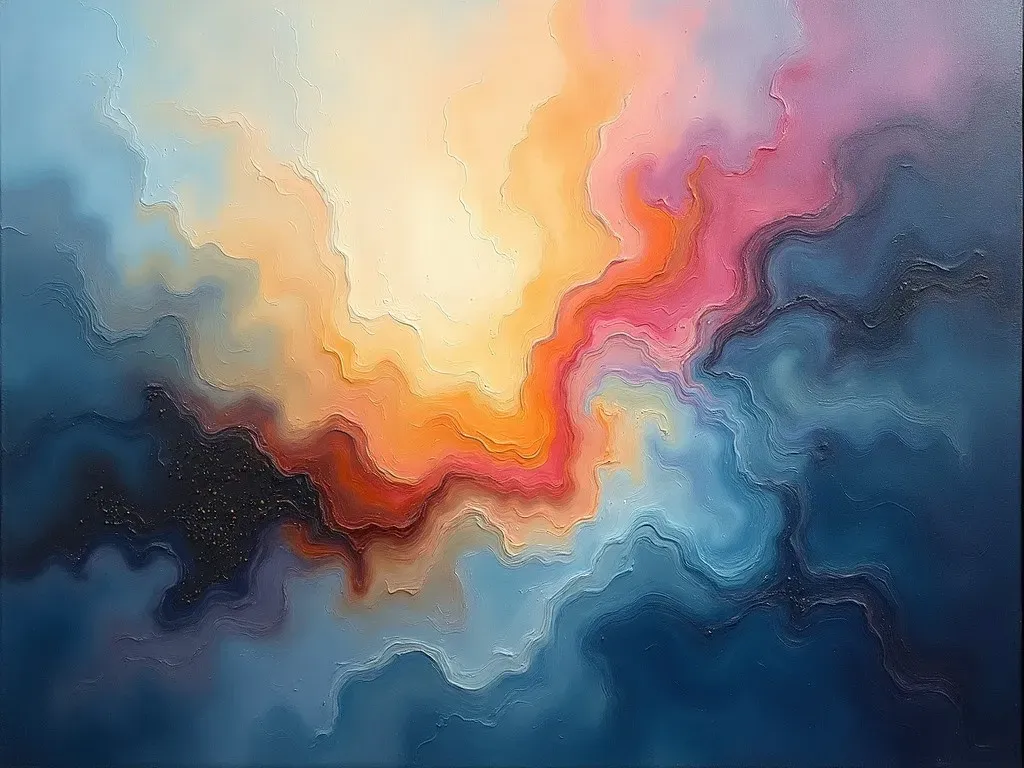When it comes to oil painting, the realm of abstract art opens up a universe of possibilities. Abstract art allows you to explore color, form, and emotion without the confines of realism, enabling both beginners and seasoned artists to unleash their creativity. In this article, we’ll dive into a rich assortment of oil painting abstract ideas that inspire, empower, and guide you on your artistic journey. Whether you’re an absolute beginner or a more advanced painter, these concepts will help you discover your unique style.
Exploring Abstract Art
Abstract art is often characterized by its use of shape, form, and color to convey emotions rather than realistic depictions. This medium is appreciated for its freedom, allowing artists to work intuitively and expressively. Here are some facts that illustrate the importance and growing interest in abstract oil painting:
| Statistic | Fact |
|---|---|
| Popularity | Abstract art sales have increased by over 40% in the last decade. |
| Diversity of Styles | There are countless styles under the abstract umbrella, including geometric, lyrical, and color field painting. |
| Art Market Growth | In 2022, the global art market was valued at approximately $67.4 billion, with abstract art comprising a significant portion. |
Techniques for Beginner and Advanced Artists
Before diving into specific ideas, it’s crucial to understand the Techniques commonly used in abstract oil painting. Depending on your skill level, exploring these basic methods can pave the way for your creation.
- Palette Knife Techniques: Use a palette knife to create thick layers of paint and unique textures.
- Color Blocking: Separate the canvas into distinct color segments for a playful, vibrant look.
- Dripping and Pouring: Incorporate fluid techniques by dripping or pouring paint to create organic shapes and patterns.
- Layering: Build your painting in layers, allowing each one to dry before applying the next for depth and complexity.
- Mixed Media: Combine oil paint with other materials like collage, charcoal, or acrylics for intriguing mixed textures.
Exciting Oil Painting Abstract Ideas
1. Minimalist Forms
For those who prefer simplicity, creating a minimalist abstract piece with basic shapes and muted colors can be incredibly effective. Consider focusing on balance and symmetry to evoke a sense of calm.
2. Vibrant Color Explosion
Explore the use of bold, contrasting colors flowing into each other. Use a wet-on-wet technique to allow colors to blend seamlessly on the canvas.
3. Geometric Patterns
Use rulers and templates to construct precise geometric shapes. This structured approach can provide a striking contrast to more fluid compositions.
4. Nature-inspired Color Palettes
Take Inspiration from nature and formulate your color palette around the hues found in landscapes, flowers, or oceans. Capture the essence of your surroundings through abstraction.
5. Emotional Expression
Channel your feelings through color choices and brush strokes. Let your emotions guide your interactions with the canvas, creating an authentic piece that reflects your current state.
6. Textured Layers
Experiment with textures by applying thick layers of paint, sponges, or even fabric to the canvas. This adds tactile interest to your artwork and engages the viewer in a unique way.
7. Interwoven Colors
Brush different colors together predictably or chaotically for a captivating, interwoven effect. Explore abrupt changes or smooth transitions to define your personal touch.
8. Abstract Portraits
Transform a traditional portrait into an abstract expression by distorting facial features while retaining some recognizable elements. This can yield an emotional and engaging piece.
9. Repetitive Motifs
Utilize repetitive shapes or strokes to form a pattern throughout your painting. This technique focuses on rhythm and can produce a mesmerizing visual experience.
10. Expressive Brush Strokes
Allow your brush strokes to retain spontaneity. Emphasize movement through dynamic strokes that convey energy and rhythm.
11. Collage Techniques
Combine oil painting with collage elements such as fabric scraps, paper, or photographs to add depth and narrative to your abstract piece.
12. Fragmentation
Draw inspiration from fragmentation by breaking down a subject into abstract shapes and forms, creating a jarring yet fascinating visual composition.
13. Bold Line Art
Implement bold, black lines alongside vivid colors to discrete areas. This gives definition to your abstraction while maintaining a playful aesthetic.
14. Suspension in Time
Create pieces that appear incomplete or paused mid-action. This technique invites viewers to consider what exists outside the frame.
15. Atmospheric Blending
Focus on gradients and soft transitions in color to evoke a sense of atmosphere. This approach can be particularly effective in landscapes where the sky meets the earth.
Frequently Asked Questions (FAQs)
What materials do I need for oil painting?
You will need oil paints, brushes, a palette, a canvas or canvas board, linseed oil or another medium, and turpentine or another solvent for cleaning.
How do I start an abstract oil painting?
Begin by sketching your ideas lightly on the canvas, choose your color palette, and then apply paint using varied techniques that you feel comfortable with.
Can beginners create abstract art?
Absolutely! Abstract art is a fantastic way for beginners to explore their creativity without the pressures of realism.
Do I need to have any formal training to paint abstract?
While formal training can be helpful, many successful abstract artists are self-taught. Experimentation and practice play crucial roles in developing your skills.
Where can I find more inspiration for abstract oil painting?
Websites like Feeling Nifty and Pinterest have extensive galleries of abstract art to draw inspiration from.
With these oil painting abstract ideas, you can tap into your artistic spirit and create works that speak volumes while remaining true to your aesthetic vision. Embrace the freedom that abstract art offers—there are no wrong turns, only paths leading to innovation and self-discovery. Happy painting!
